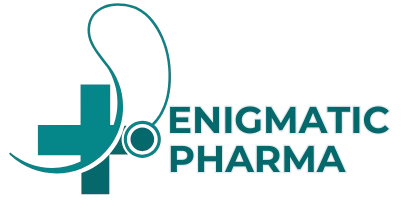Information
METH
Meth Drugs for sale in the USA,Australia,Canada and UK
Meth drugs, or meth, is a powerful stimulant that can make you feel more awake and active.Scientists in the early 20th century developed it in an effort to improve the medication amphetamine. But their creation turned out stronger than they expected — too strong for most people to use safely without the risk of overdose or addiction.
Meth Meme
The U.S. government has labeled meth a schedule II drug, which means it has a high potential for misuse but is legal in certain contexts. For instance, the ADHD medication Desoxyn contains methamphetamine. However, most meth use is illegal in the United States.
Here’s the rundown of everything you’ve ever wanted to know about meth.
There are two kinds of meth:
- Regular meth can come in the form of a pill or white powder.
- Crystal meth resembles shards of clear, whitish rock. Some people call it “glass” or “ice” due to its appearance.
Meth pills are for oral use only. Crystal meth is smoked in a glass pipe and inhaled through your mouth.
Meth powder can be used in a number of ways, including:
- snorting dry powder into your nose via a straw
- injecting dissolved powder into your bloodstream
- boofing (booty-bumping), or squirting dissolved powder into your rectum with a syringe
-
A lot of people take meth because it makes them feel good. Taking meth typically produces a rush of pleasurable feelings. For instance, you might feel energized, confident, and more alert than usual.
The way you take meth can shape the type of euphoria you experience:
- Smoking, injecting, or boofing meth typically creates a short but intense “rush.”
- Snorting or swallowing meth generally leads to a longer, steadier “high.”
That said, meth can have a range of effects beyond euphoria.
Psychological effects
Possible psychological effects of meth include:
- increased attention
- increased energy
- feelings of extreme happiness
- irritability
- anxiety
- restlessness
- slightly sharper thinking
- paranoia
Physical effects
Common physical effects of meth include:
- faster breathing
- faster heart rate
- higher body temperature
- higher blood pressure
- dilated pupils
- dry mouth
- reduced appetite
- reduced need for sleep
How to smoke Meth
The effects of meth can last anywhere from a few minutes to several hours, depending on how you take the drug and how often you use it.
The euphoria you experience when using meth may last only a few minutes. But other effects, like increased energy or higher body temperature, can linger for hours.
Many people use meth mainly to feel that initial rush of euphoria. So, once that euphoria wears off, they may take more in order to continue enjoying that feeling.
Some folks may do a “run,” which involves taking meth continuously for several hours or days, often without sleeping or eating.
If you feel calmer when drinking alcohol, you might assume it’ll help you feel less restless or jittery when you take meth. But it’s not a good idea to mix these substances.
Alcohol could potentially boost the effects of meth by heightening its euphoric effects. But it may also lead you to feel more anxious and agitated — not to mention increase your risk of alcohol poisoning or overdose. You may not feel alcohol’s effects as you typically would, so you might drink more alcohol than your body can process.
What’s more, combining meth — a stimulant — with depressants like alcohol, opioids, or benzodiazepines can have a tug-of-war effect on your bodily functions.
For instance, your heart rate may speed up, slow down, and then speed up again, because your body metabolizes each drug at different rates. These rapid changes can put a lot of strain on your body, to the point where you need emergency medical attention.
It’s also dangerous to combine meth with other stimulants, like cocaine. If you take more than one stimulant at a time, you have a higher risk of experiencing a stroke or heart attack, and your body may overheat.
Meth produces more reward chemicals than your brain can fully handle. It sends your brain’s dopamine levels into the stratosphere, so to speak.
The drug also makes dramatic changes to your brain structure in a very short time, which can lead you to keep using it despite any negative consequences on your life, health, and relationships. This change in behavior is known as meth addiction, or methamphetamine use disorder.
In 2020, about 1.5 million people in the United States over the age of 12 had meth use disorder.
Common signs of meth use disorder include:
- Cravings: You think about meth regularly, and your urge to use it again may feel overwhelming.
- Continued use: You keep using meth even after developing health concerns, like extreme weight loss, mouth sores, or rotting teeth.
- Tolerance: You need to use more and more meth to experience the same effects as before.
- Dependence: If you stop using meth for a while, you experience withdrawal symptoms like fatigue and depression.
Chronic meth use can cause many long-term health issues.
Psychological effects|Meth ingredients
While using meth and after you stop taking it, you may experience psychological issues like:
- paranoia, or suspicion of others
- psychosis, including delusions like insects crawling on or under their skin
- sleeping difficulties
- memory loss
- executive dysfunction, including decreased ability to focus or make quick decisions
- cognitive impairment, especially verbal abilities
It may take some time for your brain to restore its dopamine circuits when you stop using meth. So, the cognitive abilities that don’t rely much on dopamine will likely recover first. Mental health symptoms like paranoia and delusions may take longer to disappear. And some effects, like memory loss, are usually permanent.
Physical effects|Meth addicts
Meth’s long-term physical effects include:
- severe tooth decay
- extreme weight loss
- skin abscesses
Meth use can also increase your risk of Parkinson’s disease, a progressive neurological condition that can make it hard to control your movements. If you inject meth with a needle, you also have a higher risk of contracting bloodborne viruses like hepatitis C.
Methamphetamine overdose is a toxic, potentially life threatening reaction to the drug. Your risk of overdose increases if you take a large dose of meth or mix methamphetamine with other drugs.
Signs of meth overdose include:
- increased agitation or paranoia
- difficulty breathing
- high fever
- severe stomach or chest pain
- heart attack
- cardiac arrest, or a stopped heartbeat
- kidney damage
- stroke
- seizure
- coma
If you or someone you know has any signs of an overdose, call for emergency help right away.
Prompt treatment could save their life, and it may also help reduce your risk of long-term or permanent damage.
Avoiding meth is the safest option. If you do take meth, these strategies can help lower your risk of dangerous side effects:
- Start low, go slow: When trying a new batch of meth, take a small “starter” dose first to check how it affects you. This is especially important when you inject meth or take it rectally, since it’s easy to give yourself more than you intended.
- Find good company: Meth can cause anxiety and paranoia, so it may help to only use it around people you know and trust. If you overdose and lose consciousness, they can call emergency services.
- Take breaks: Even with a stimulant racing through your system, your body still needs fuel and rest. Make sure to eat and drink every couple of hours. Try to sleep at least a little, if you can.
- Use clean supplies: Dirty or contaminated materials pose the biggest infection risk. Don’t share syringes, pipes, straws, or any other tools that come into contact with bodily fluids.
- Make sure your meth is really meth: Lots of drugs look like white powder, and your batch could contain fentanyl and other substances. It’s wise to keep test strips around to check your meth before you use it.
If you’d like to stop using meth, you have options for confidential support and treatment.
Professional treatment programs can’t tell your boss, family members, or law enforcement that you take meth or have a meth addiction. Barring a life-or-death emergency, your participation in treatment is completely anonymous.
Treatment for meth use disorder may involve a combination of strategies, such as:
- Behavioral therapy: Behavioral therapy can help you reduce meth use and treat co-occurring depression and anxiety. Just keep in mind that you’ll typically need to keep attending therapy in order to maintain the effects.
- Residential treatment: Inpatient treatment can offer 24/7 support for severe symptoms. While research on inpatient treatment for meth use disorder remains limited, some evidence suggests it’s more effective than medically managed treatment alone.
- Medication: The Food and Drug Administration (FDA) hasn’t approved any medications for treating meth addiction. However, your doctor may prescribe medication to address certain long-term side effects, like skin infections or severe weight loss.
- Repetitive transcranial magnetic stimulation (rTMS): This treatment uses magnetic pulses to target specific areas of your brain. One small 2017 study suggests rTMS can reduce meth cravings after 5 sessions. Participants also reported some improvement to memory and verbal learning skills affected by meth use.
- Support groups: Many people find it helpful to talk with others who’ve lived through similar circumstances. You can search for addiction support groups by using the Substance Abuse and Mental Health Services Administration (SAMHSA) behavioral health treatment locater.
Substance use disorders and addiction aren’t choices you make — they’re mental health conditions that can have long-term effects on your health and well-being.
That said, you always have the option to reach out and find support, and it’s never too late — or too early — to ask for help.

